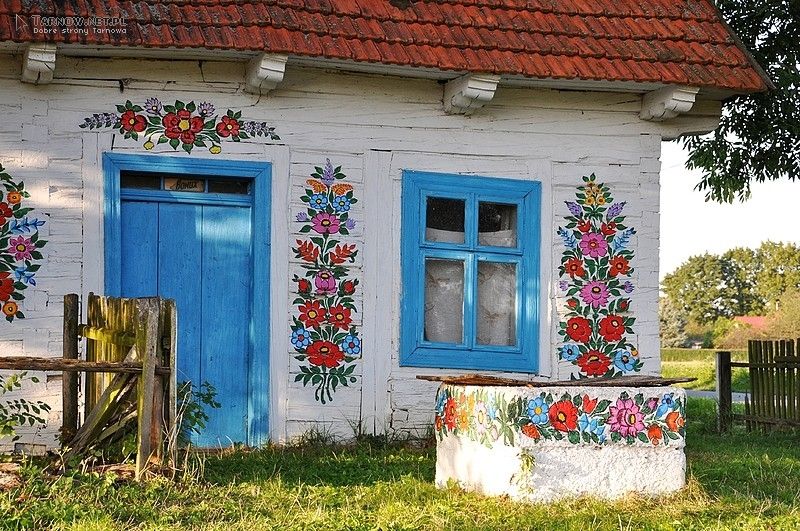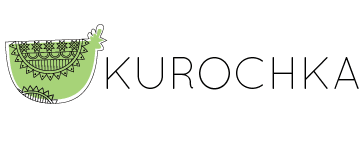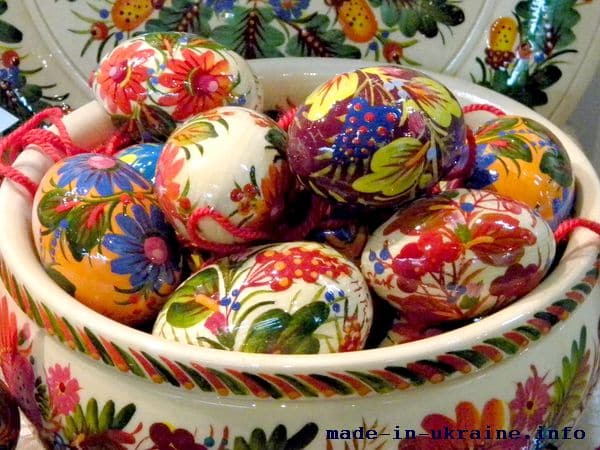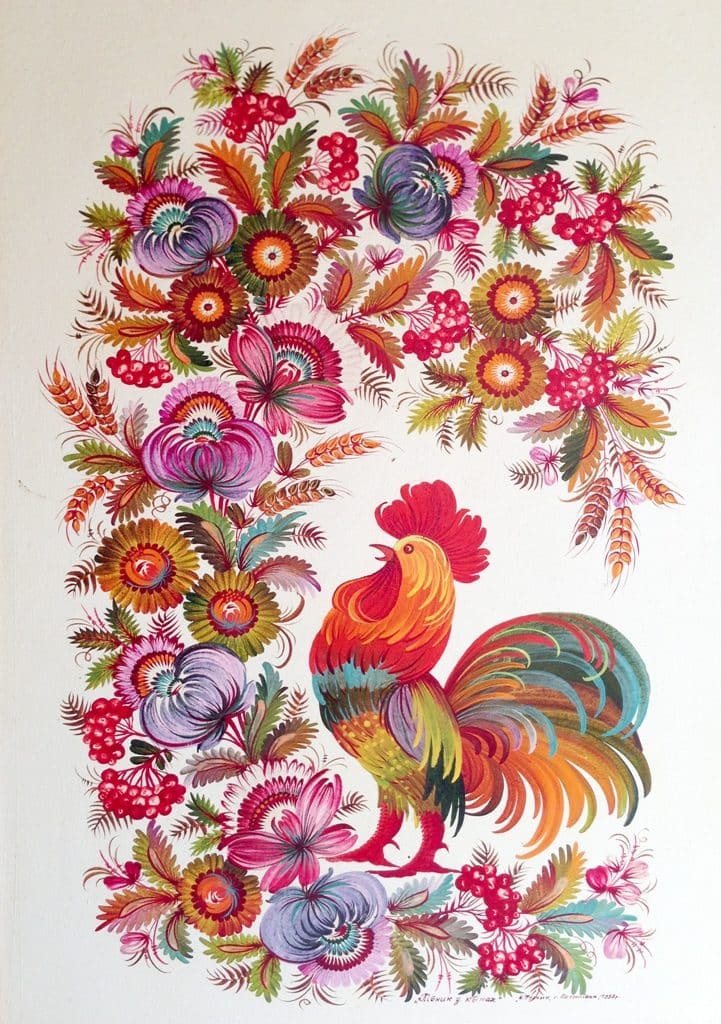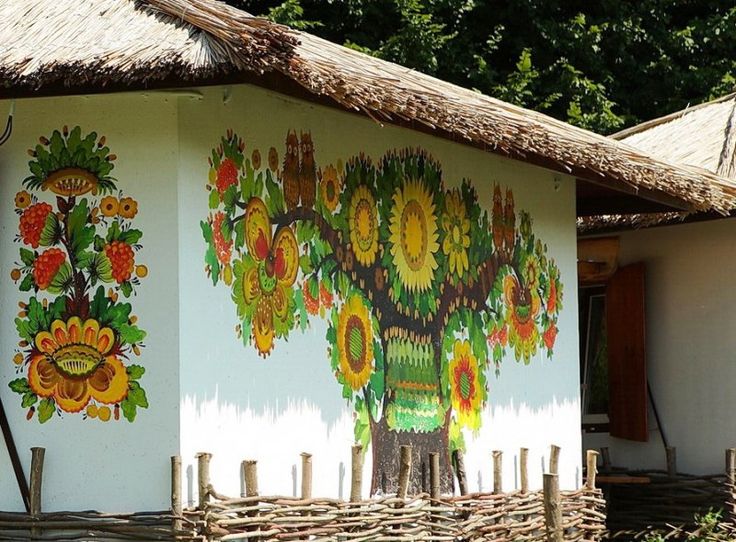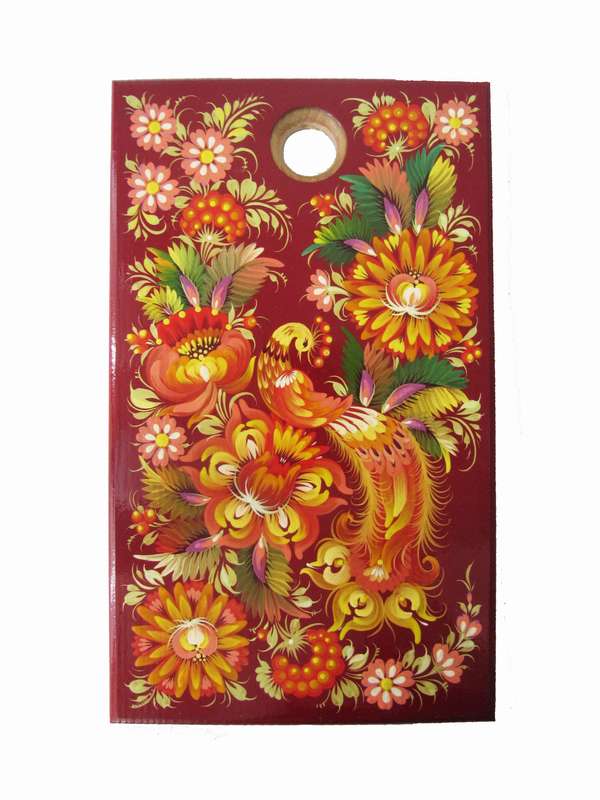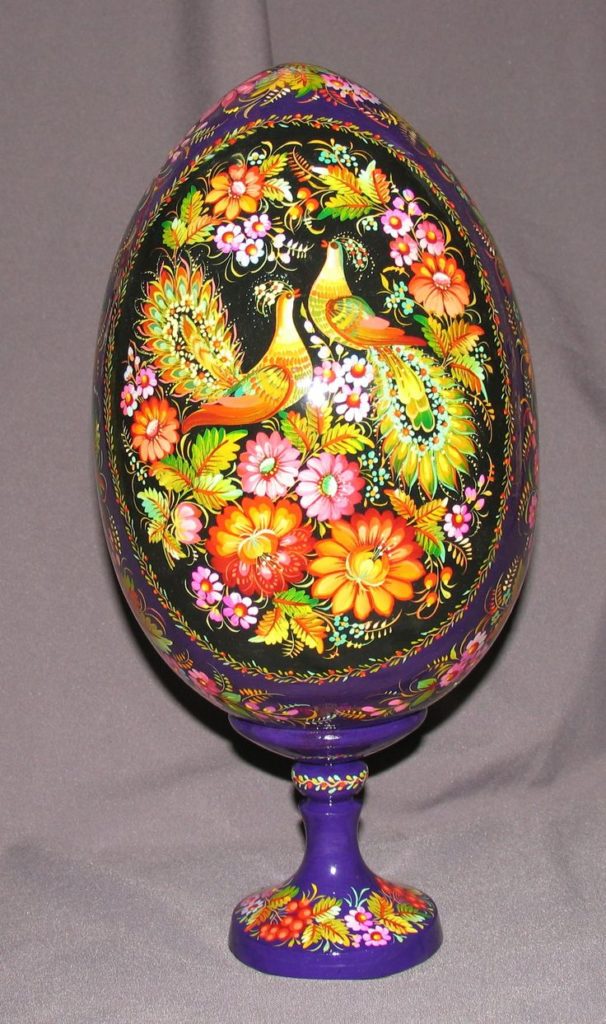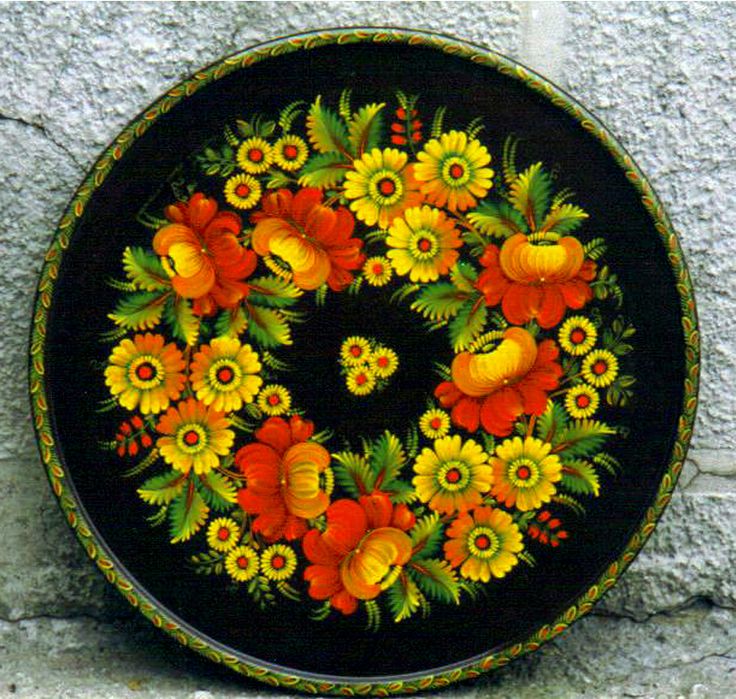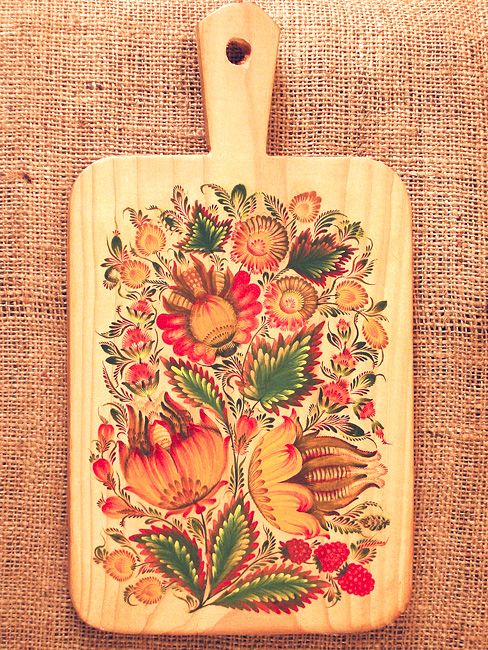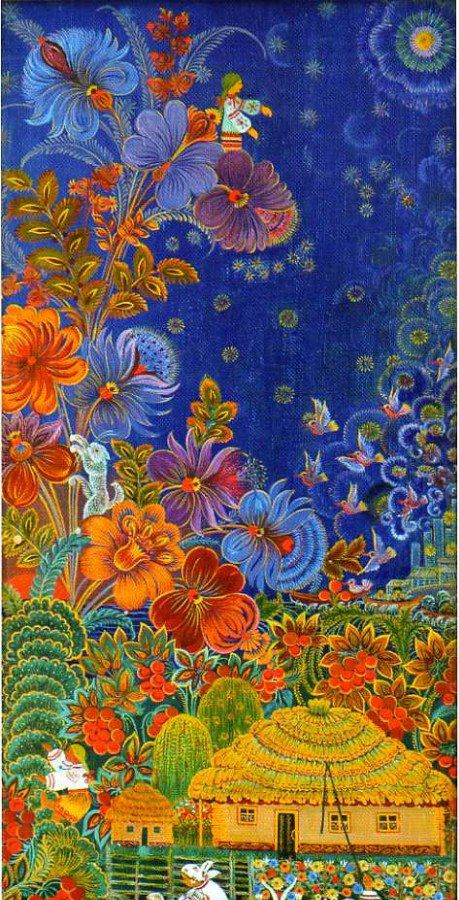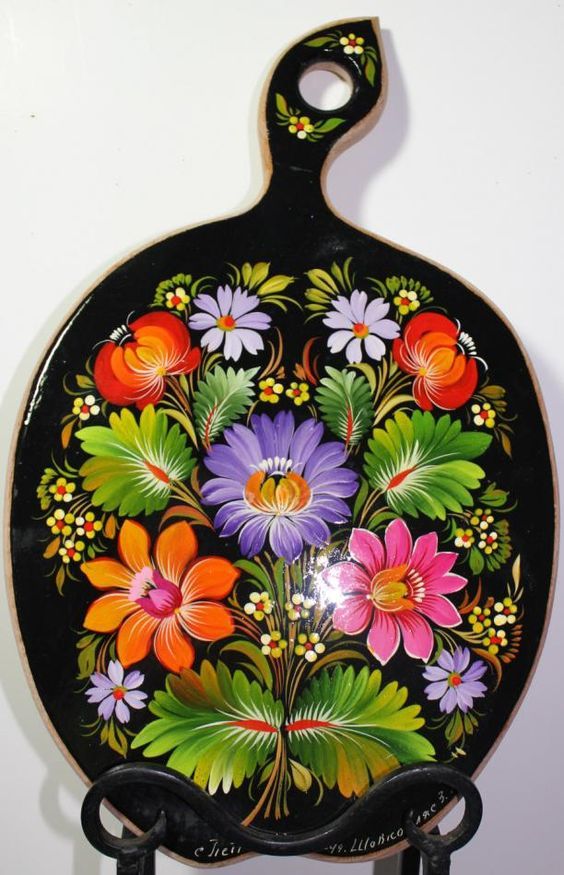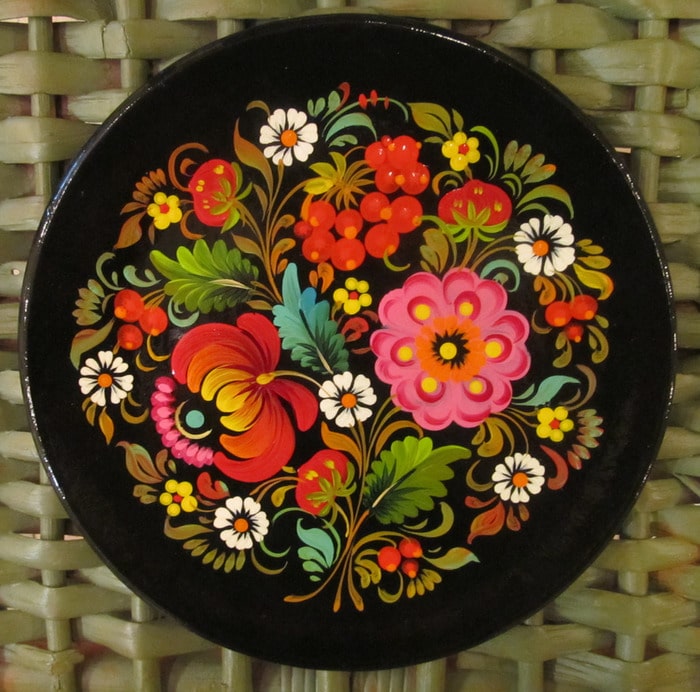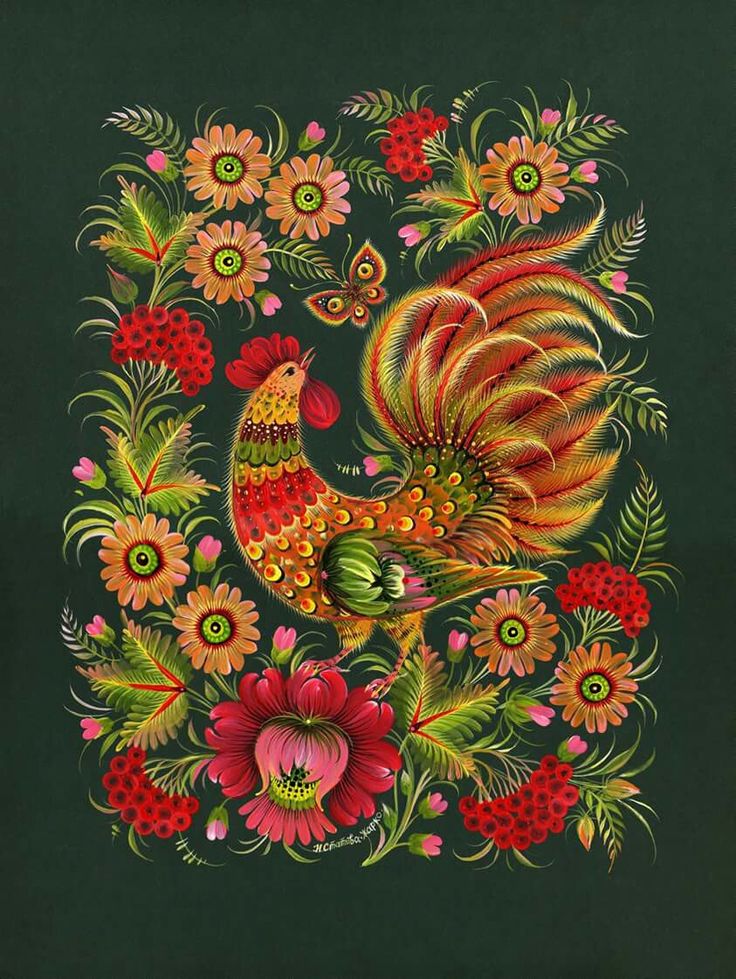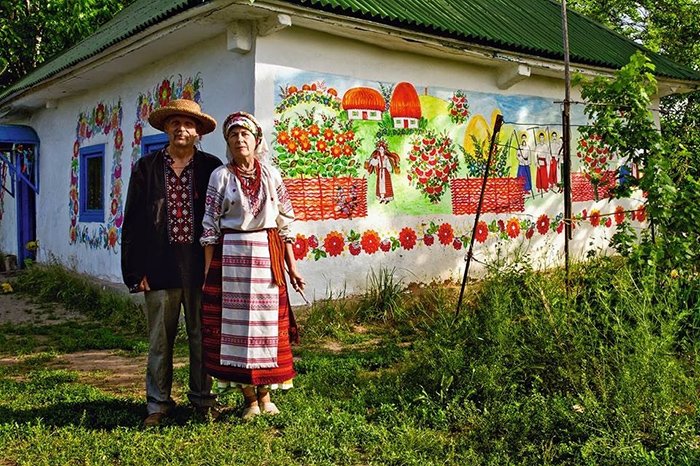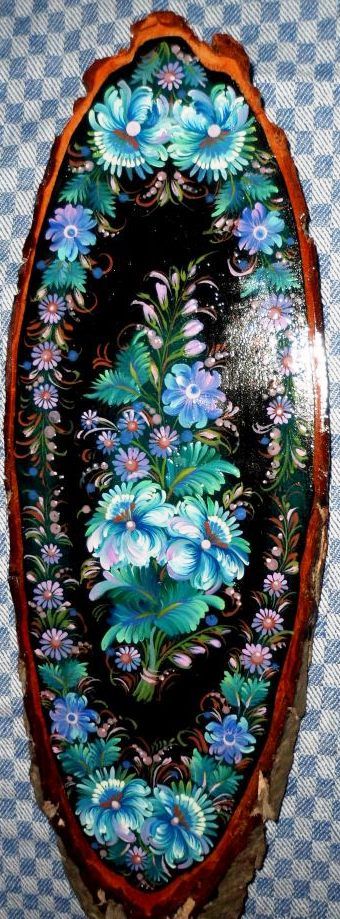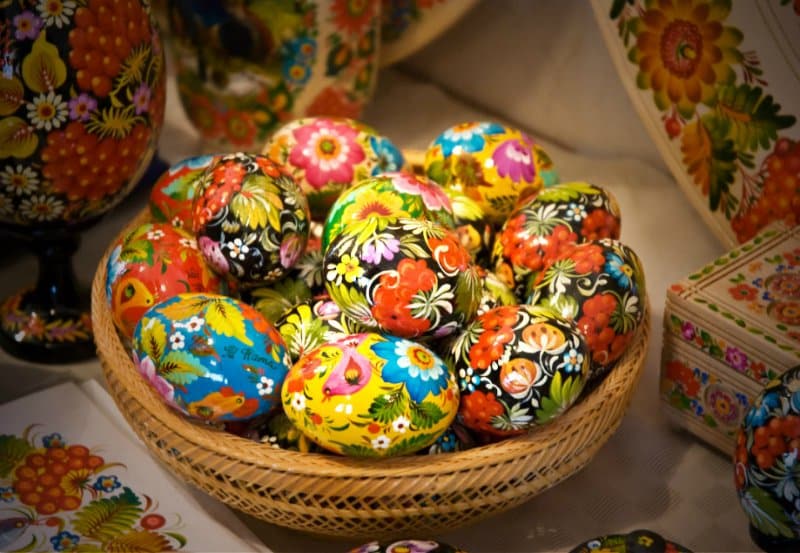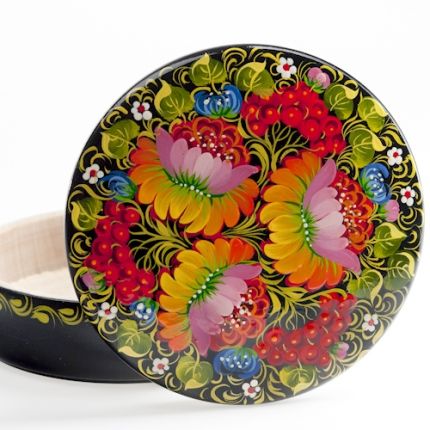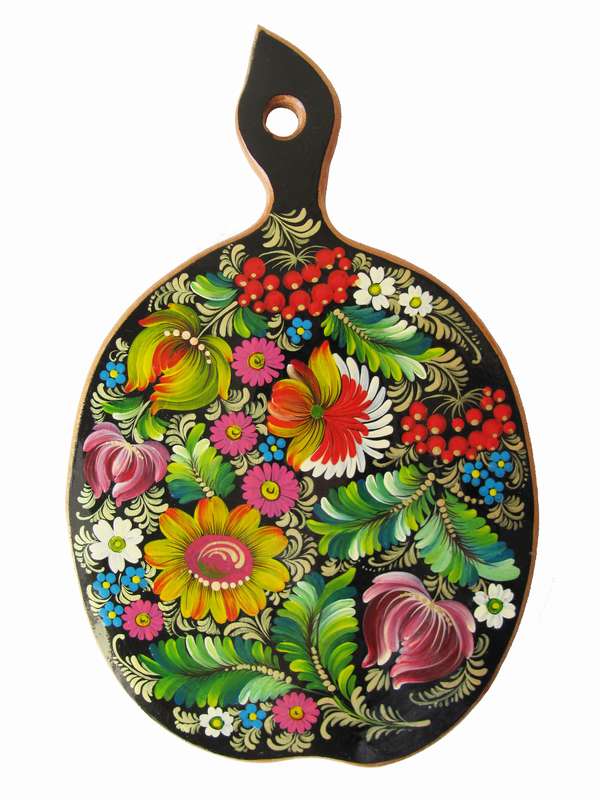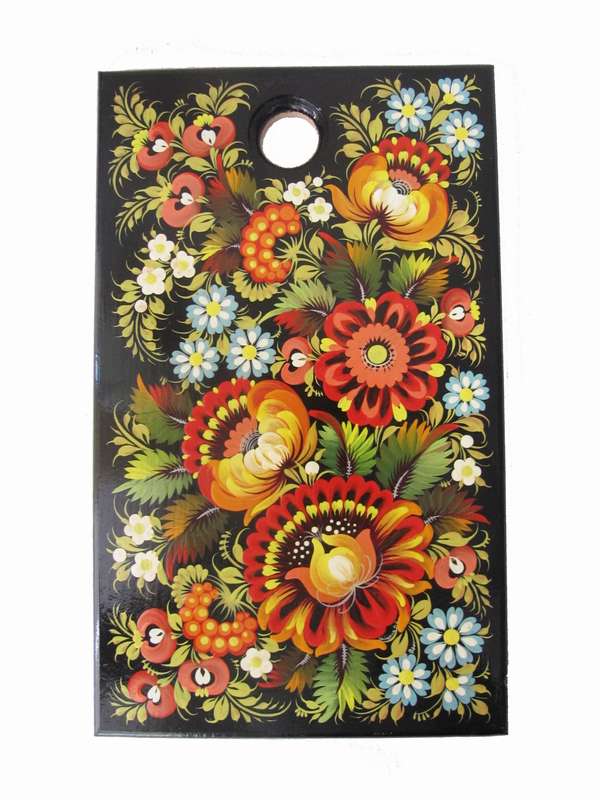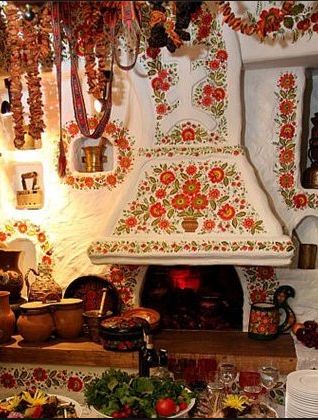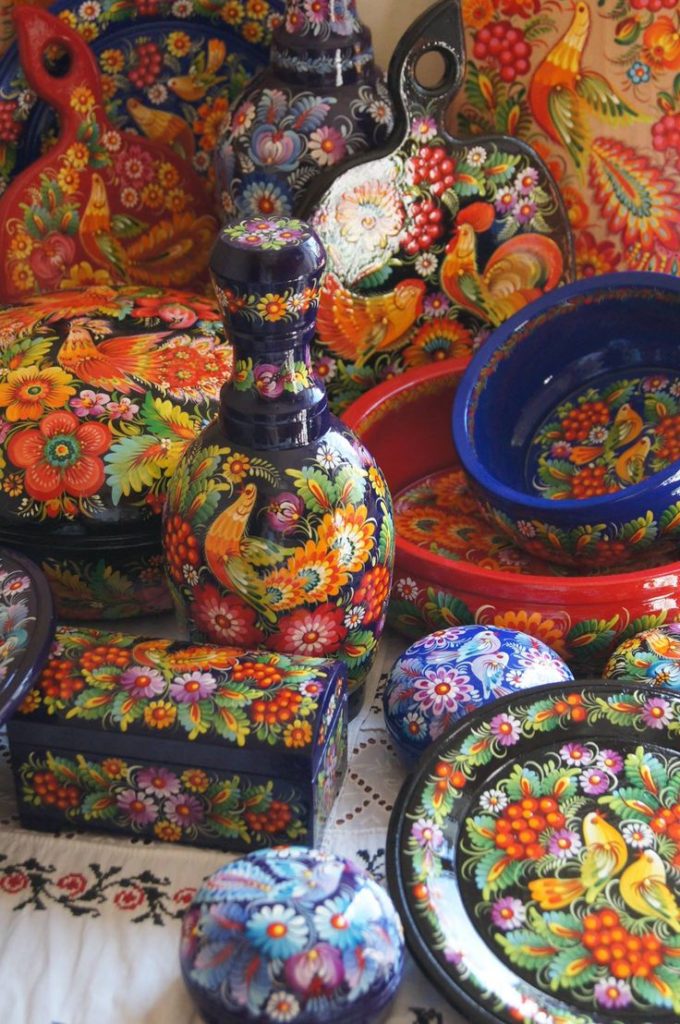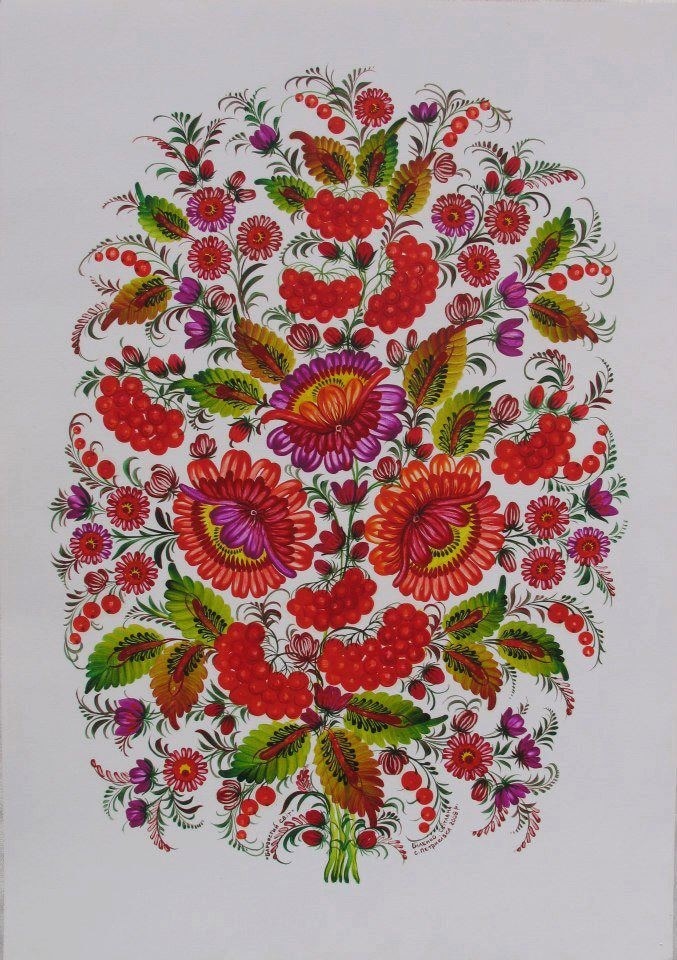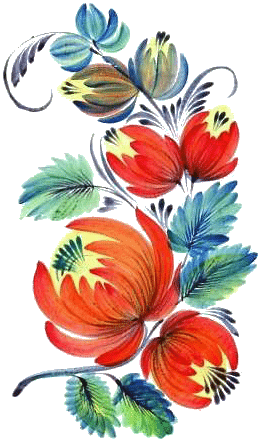
Petrykivka decorative painting is a traditional Ukrainian folk painting style that has played a spiritual role in people’s lives for centuries. It originates from the Petrykivka village in the Dnepropetrovsk region, in central-south-eastern Ukraine, along the Dniepr river. In 2013 it was included to the UNESCO Representative List of the Intangible Cultural Heritage of Humanity.
The main elements of Petrykivka are lush flowers, symbols of nature: mallow, peonies, asters, various wild flowers, and even those that the masters make up. The plant imagery is often combined with birds or firebirds, and sometimes with images of animals and people.
People believed that beauty held protective magic, and therefore they painted the external walls of their light clay houses, their windows and their doors with these colorful and magical ornamenta.They also painted interior walls, stoves, furniture, wedding chests, dishes, plates, cutting boards, jewelry boxes, and all sorts of household utensils.
Each housewife tried to make her house the most beautiful. They used sticks wrapped in cloth, brushes made of cathair or simply their fingers. The design is built around one or more plant stems, from which the rest of the elements grow but do not overlap. The colors are bright, saturated and flat. Smooth gradients are achieved by dipping the body of the brush into one color and the tip into another. Historically, Petrykivka painting was done exclusively on white backgrounds, although contemporary artists now use blue, green, red and most often, black.
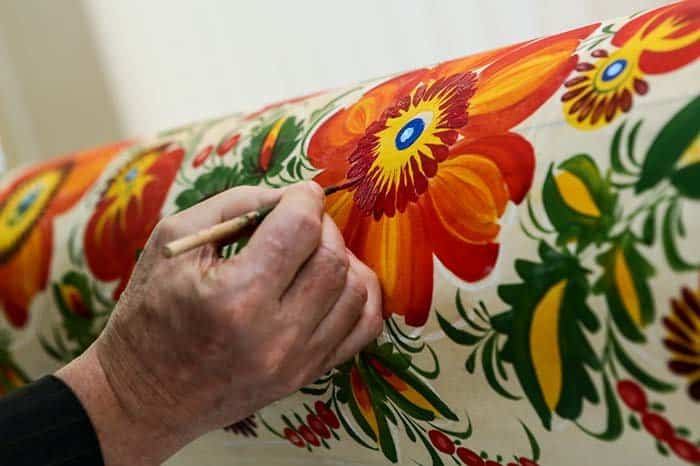
Petrykivka has thrived as a modern art form, kept alive by the folk artists who chose to make it their profession. People enjoy the household items, souvenirs and other masterfully decorated items not only for their beauty, but the protection, warmth and prosperity they bring into the home. And that’s not to mention the mood lift that these cheerful masterpieces provide!
- Petrykivka Wikipedia
- A video about Petrykivka in Ukrainian
- UNESCO’s video: Petrykivka decorative painting as a phenomenon of the Ukrainian ornamental folk art
- How to make a brush from cat fur
Short History
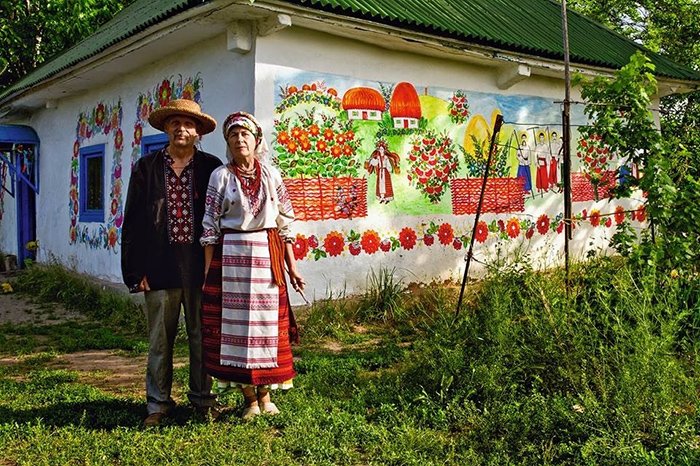
The village of Petrikovka founded 230 years ago by Petro Kalnyshevsky (the last Kosh Otaman of the Zaporozhian Host; a hero of the Russo-Turkish war of 1768-1774).
Immediately in the free Cossack village an interesting custom formed: women began to paint the walls of their huts with colorful floral patterns. They used brushes made
from cat hair, sticks wrapped in cloth or simply their fingers.
Paint was made with eggs and milk, with vivid colors inspired by the colorful nature of the Dnieper. The women competed with each other, trying to make theirs the most beautiful home in the village. The people believed that their houses were a reflection of what kind of person they were, how spiritually rich they were. On the other hand, the people whose walls were bare weren’t worth even saying hello to, because they were seen as morally dark and lacking.
Then came World War I, the Revolution and Collectivization, and as a result, folk art was put aside in favor of art more fit for the philosophy of the Soviet Union.
Since the 1930s, however, Petrikovskiy folk art has been reviving; there is an organization in the village, which now employs 45 folk artists to carry on the tradition.
